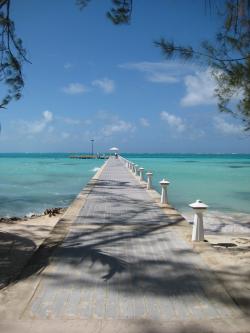jks
About
- Username
- jks
- Joined
- Visits
- 29,952
- Last Active
- Roles
- Member, Administrator, Moderator
- Points
- 211
- Location
- Tauranga, New Zealand RF82ci
- Callsign
- ZL4VO/KF6VO
- Additional information
- KiwiSDR support email: support@kiwisdr.com
Reactions
-
Wideband pulsing noise & Noise Blanker absence: I'm in trouble! [NB added in v1.152]
-
Wideband pulsing noise & Noise Blanker absence: I'm in trouble! [NB added in v1.152]
Okay. v1.153 is out with a threshold slider (get it now by rebooting). @Markone your Kiwi is already updated. Here is a screenshot with three different settings. The waterfall shows from bottom to top: no NB, NB 100 usec 50% thresh, 1000 usec 65% thresh. The last two sound the same but note how the waterfall is cleaned up a bit more.[re-uploaded image below] -
Wideband pulsing noise & Noise Blanker absence: I'm in trouble! [NB added in v1.152]
I found that on some weaker sources increasing the gate time to 1 msec (1000 usec on the slider) improved the noise reduction.@sv1btl ;I was going to add a threshold slider but ran out of time before yesterday's update deadline. -
Direction Finding and linking existing KiwiSDRs
Wow -- check Christoph's latest post: https://github.com/jks-prv/Beagle_SDR_GPS/issues/130#issuecomment-347206064It's a plot of a ground wave TDoA solution for DCF77 using three Kiwis relatively close by. -
Sound recording from multiple opened browse windows for diversity reception?
When you include the --kiwi-wav flag the GPS timestamps will also be added to the files when recording in IQ mode. This will allow post-processing the data for the very interesting projects now ongoing: Christoph's HFDF work and zfyoung's diversity reception.There is code in the repository (proc.m, read_kiwi_iq_wav.cc) for Octave (Matlab) to read the files and create various plots. I haven't tried this myself but see the Github GPS timestamp issue (https://github.com/jks-prv/Beagle_SDR_GPS/issues/130#issuecomment-346085747) for examples. -
Direction Finding and linking existing KiwiSDRs
Wow -- check Christoph's latest post: https://github.com/jks-prv/Beagle_SDR_GPS/issues/130#issuecomment-347206064It's a plot of a ground wave TDoA solution for DCF77 using three Kiwis relatively close by. -
Direction Finding and linking existing KiwiSDRs
Christoph's latest post on https://github.com/jks-prv/Beagle_SDR_GPS/issues/130 shows how his GPS timestamps are within 20 usec of DCF77 (77.5 kHz) as received by a couple of Kiwis a few hundred km distant. Really fantastic work! -
Sound recording from multiple opened browse windows for diversity reception?
-
Sound recording from multiple opened browse windows for diversity reception?
You can't run the old kiwirecorder with v1.151 Use the current one. And you can't use the latest one from my branch on Kiwis running earlier than v1.151 See the comments above. I haven't tested the latest one with the GPS timestamp support with DRM -- and there are no DRM transmissions on right now.. -
Direction Finding and linking existing KiwiSDRs
There have been three or four people recently express interest in working on HFDF. Some on here or on Github issues or in private emails to me. I'll try and point everyone to this thread.It is important to note that V/UHF DF is significantly different from the HFDF problem due to the issues imposed by the nature of the ionosphere at HF. It is much more complicated than you would expect. But we have this wonderful resource: lots of geographically diverse Kiwi installations and now GPS timestamped IQ data thanks to Christoph's recent work (https://github.com/jks-prv/Beagle_SDR_GPS/issues/130)A recent example of V/UHF DF using RTL-SDRs: https://www.rtl-sdr.com/localizing-transmitters-to-within-a-few-meters-with-tdoa-and-rtl-sdr-dongles/Slideshow about HFDF techniques: http://www.g4axx.com/HF_Radio_Direction_Finding.pdf




